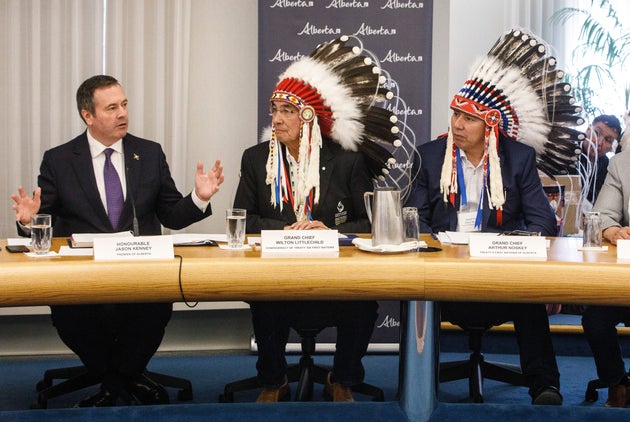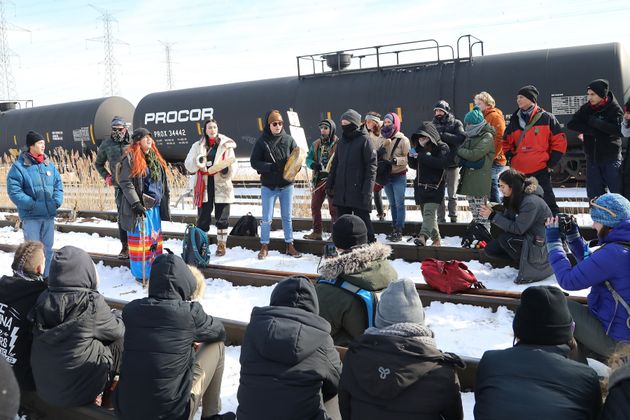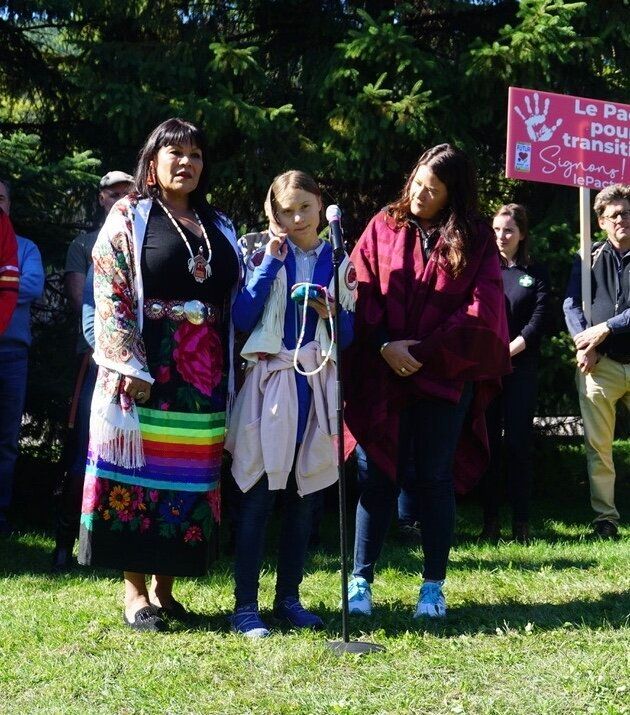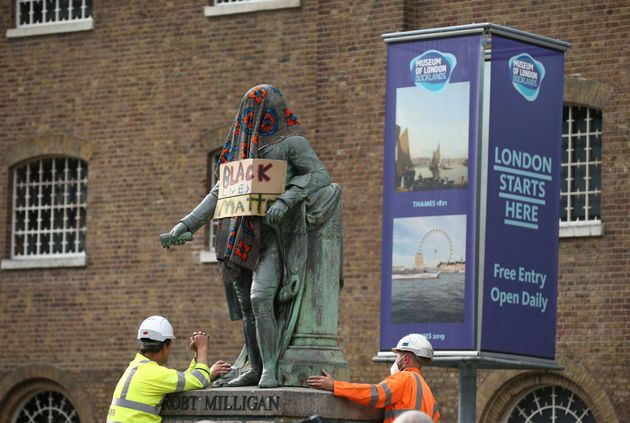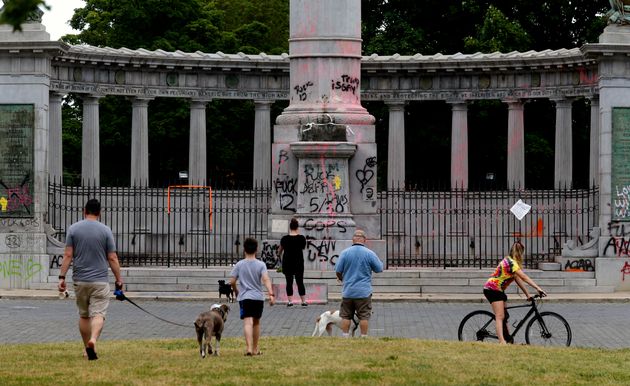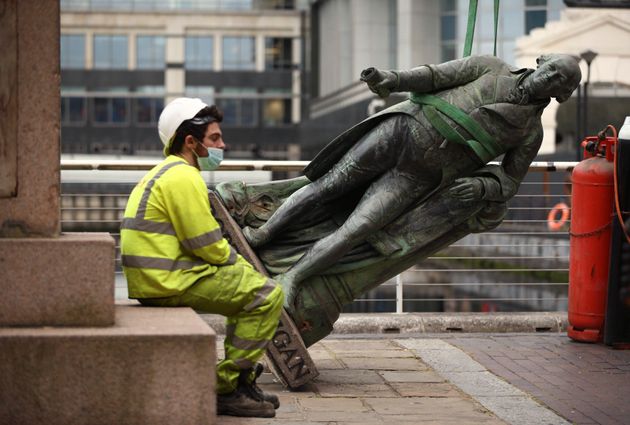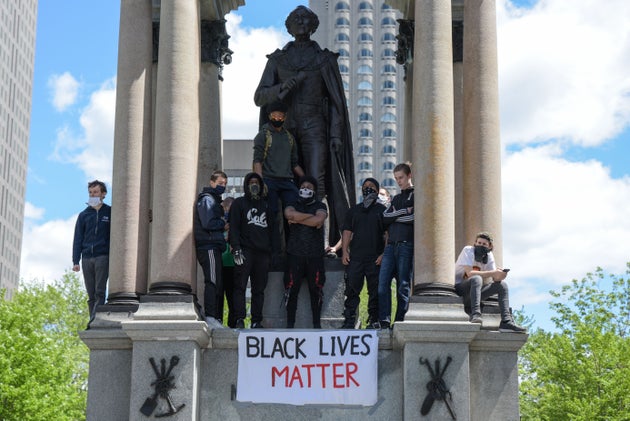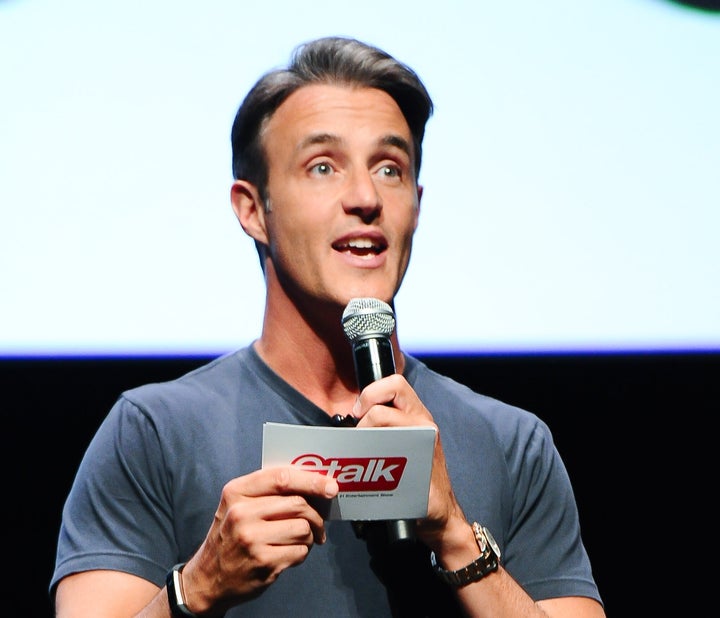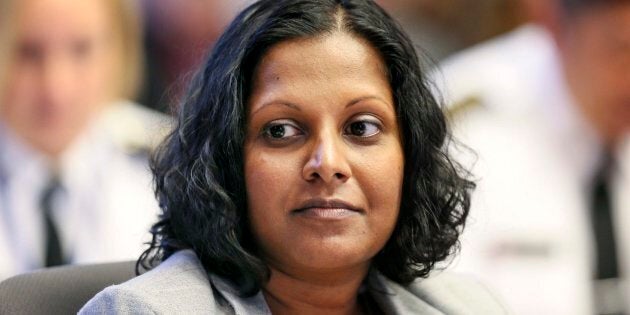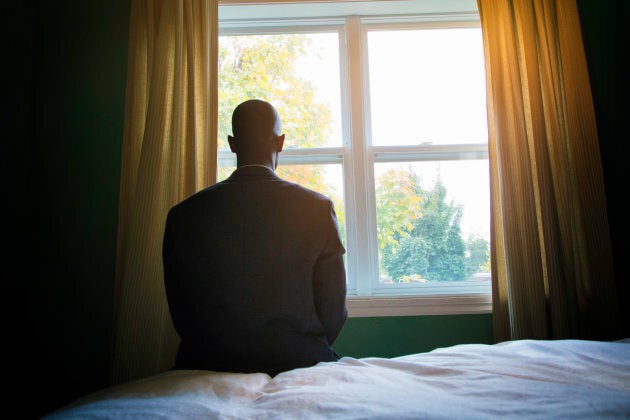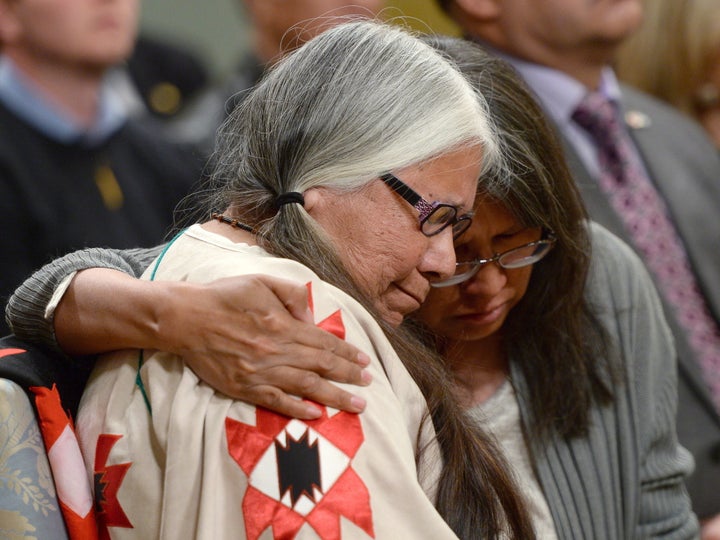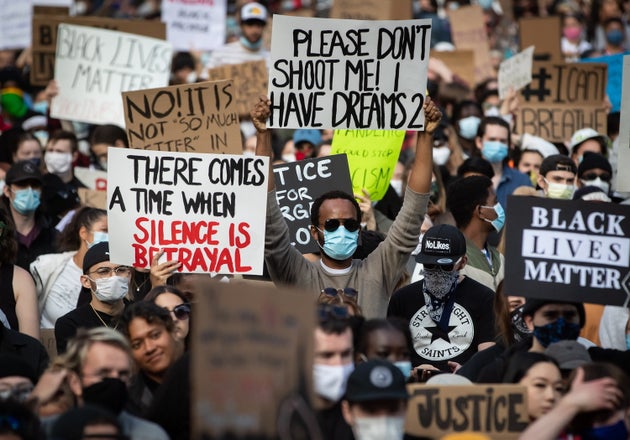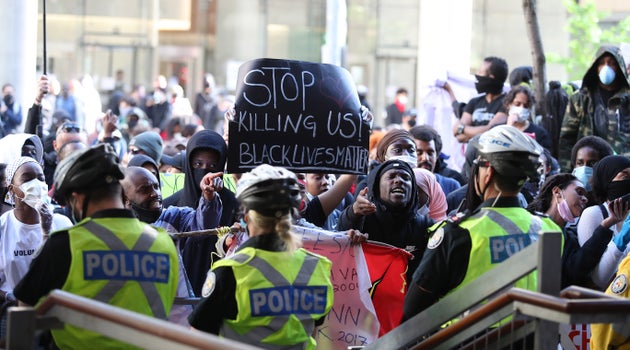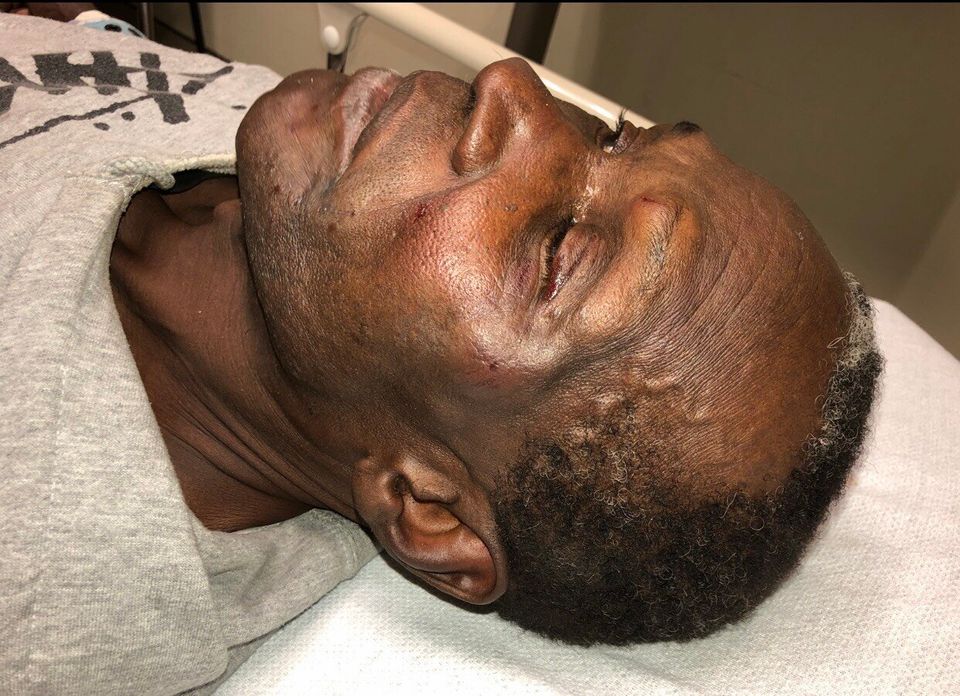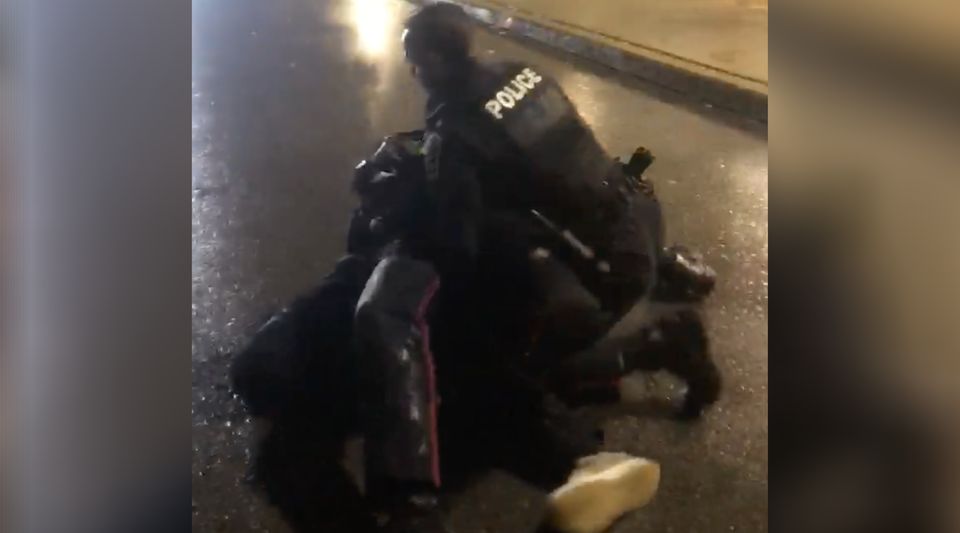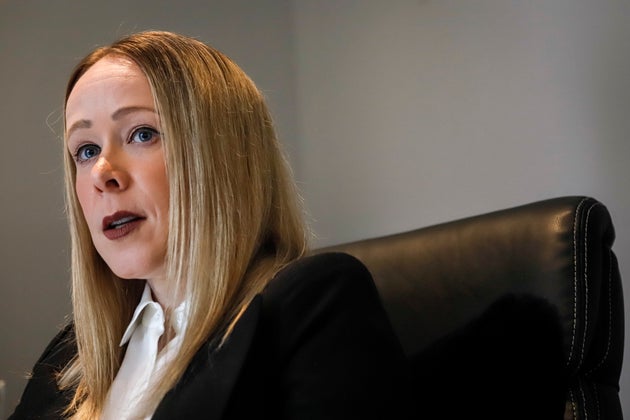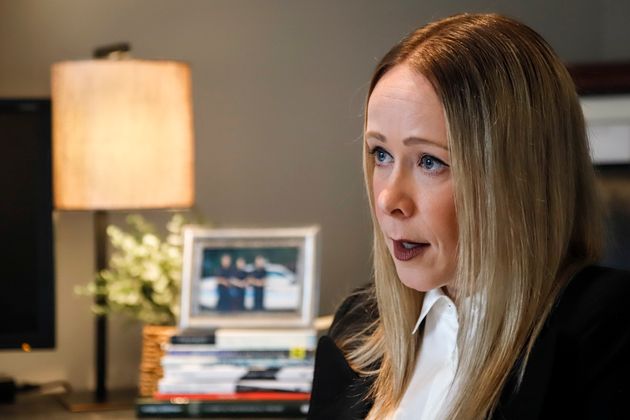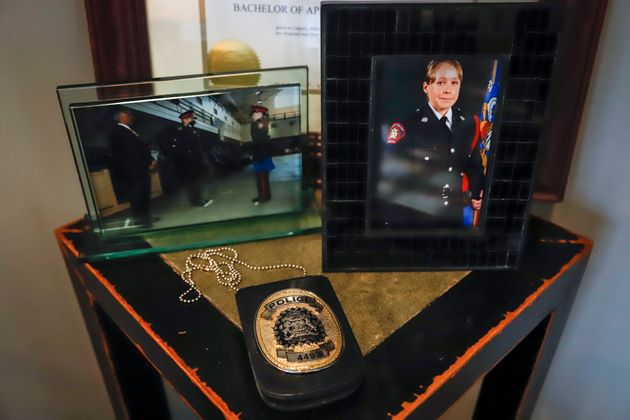Black lives matter on the Prairies just as much as in the big cities.
By Melanie Woods
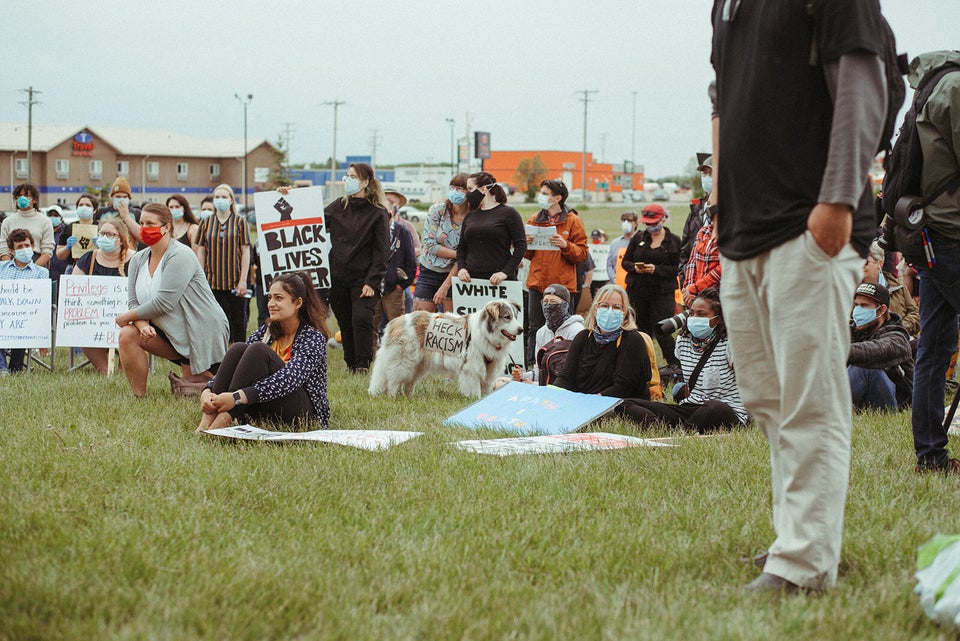
JESSICA KAITLYN PHOTOGRAPHY
Hundreds attended a Black Lives Matter event in Innisfail, Alta. on June 13, 2020.
On a windy June day, George Floyd’s name echoed across the No Frills parking lot in Innisfail, Alta., just off Highway 2 that connects Calgary and Edmonton.
In a municipality of 8,000 where an organizer with United We Roll sits on town council and less than five per cent of the population identifies as a visible minority, nearly 1,000 people came together to talk about racism and police brutality.
While crowds have protested and marched in cities around the world following the death of George Floyd in Minneapolis and other Black people at the hands of police, a growing number are demonstrating in less expected.
The Innisfail Black Lives Matter rally was initially cancelled because of online racism. But a reconfigured rally went ahead, featuring homemade signs with slogans like “Rednecks against racism.”
Similar events, rallies and discussion groups are popping up in communities across rural and central Alberta, from Red Deer to Cremona to Caroline. In many of these mostly white communities, words like “micro-aggressions,” “systemic racism” and “white privilege” are being talked about seriously for the first time by residents and local politicians.
Much of the organizing has been guided by a series of Facebook pages and groups connecting people from villages like Cremona, population 444, to larger cities like Red Deer and Calgary.
Facebook groups and pages, including Rural Alberta Against Racism, Central Alberta Against Racism, Red Deer Against Racism, UBUNTU Central Alberta, have become sounding boards for people across the province.
Users share educational resources, messages of encouragement and memes as well as information on anti-racism rallies and discussions across Alberta. While many of the groups popped up in response to anti-Black racism, they’ve also become spaces to talk about injustice against Indigenous people or simply to educate white people on the basics of privilege.
Taylor McNallie is one of the founders of Rural Alberta Against Racism, a Facebook page and loose collective that supports anti-racism events and organizers in rural Alberta. She said her own experience growing up Black in an Alberta village has informed how she thinks about racism on the Prairies.
McNallie was born in Saskatoon, but her family moved to Cremona when she was young. She’s lived in several other small Alberta communities over the years, including Didsbury and Black Diamond before settling in Calgary, where she lives now with her partner and daughter.
As the only Black person in her community growing up, McNallie says she faced challenges.
“The moment I got into Cremona, that was the first time I experienced racism,” she told HuffPost Canada. “And I’m not gonna say that was the first time it’s ever happened. It’s probably just the first time I’ve noticed, because I grew up with a single mom who was white and she had me when she was very young, so I’m sure there were a lot of things that I just didn’t know were going on.”
On a windy June day, George Floyd’s name echoed across the No Frills parking lot in Innisfail, Alta., just off Highway 2 that connects Calgary and Edmonton.
In a municipality of 8,000 where an organizer with United We Roll sits on town council and less than five per cent of the population identifies as a visible minority, nearly 1,000 people came together to talk about racism and police brutality.
While crowds have protested and marched in cities around the world following the death of George Floyd in Minneapolis and other Black people at the hands of police, a growing number are demonstrating in less expected.
The Innisfail Black Lives Matter rally was initially cancelled because of online racism. But a reconfigured rally went ahead, featuring homemade signs with slogans like “Rednecks against racism.”
Similar events, rallies and discussion groups are popping up in communities across rural and central Alberta, from Red Deer to Cremona to Caroline. In many of these mostly white communities, words like “micro-aggressions,” “systemic racism” and “white privilege” are being talked about seriously for the first time by residents and local politicians.
Much of the organizing has been guided by a series of Facebook pages and groups connecting people from villages like Cremona, population 444, to larger cities like Red Deer and Calgary.
Facebook groups and pages, including Rural Alberta Against Racism, Central Alberta Against Racism, Red Deer Against Racism, UBUNTU Central Alberta, have become sounding boards for people across the province.
Users share educational resources, messages of encouragement and memes as well as information on anti-racism rallies and discussions across Alberta. While many of the groups popped up in response to anti-Black racism, they’ve also become spaces to talk about injustice against Indigenous people or simply to educate white people on the basics of privilege.
Taylor McNallie is one of the founders of Rural Alberta Against Racism, a Facebook page and loose collective that supports anti-racism events and organizers in rural Alberta. She said her own experience growing up Black in an Alberta village has informed how she thinks about racism on the Prairies.
McNallie was born in Saskatoon, but her family moved to Cremona when she was young. She’s lived in several other small Alberta communities over the years, including Didsbury and Black Diamond before settling in Calgary, where she lives now with her partner and daughter.
As the only Black person in her community growing up, McNallie says she faced challenges.
“The moment I got into Cremona, that was the first time I experienced racism,” she told HuffPost Canada. “And I’m not gonna say that was the first time it’s ever happened. It’s probably just the first time I’ve noticed, because I grew up with a single mom who was white and she had me when she was very young, so I’m sure there were a lot of things that I just didn’t know were going on.”
The moment I got into Cremona, that was the first time I experienced racism.Taylor McNallie
McNallie is not alone in her experience as a Black woman in central Alberta. Dieulita Datus has lived in central Alberta since 2007 and said she’s experienced everything from micro-aggressions to a confrontation involving a group of young men who waved a Confederate flag at her workplace.
“There are so many instances of racist attacks, micro-aggressive attacks that have been geared towards me,” she told HuffPost.
Central Alberta has a particularly dark past when it comes to racism. Eckville, about a 20-minute drive outside of Red Deer, is where high school teacher Jim Keegstra was charged and convicted of hate speech in 1984 for teaching his students anti-Semitic material denying the Holocaust.
Central Alberta was also once home to strong chapters of hate groups like the Aryan Nation, one of the last outlets of the KKK and was a hotbed of eugenics-based forced sterilization operations.
Even now, the area is predominantly white. In the 2016 census, less than one per cent of Cremona’s population identified as a visible minority. Eckville didn’t register a single person of a visible minority. And Red Deer, a city of over 100,000 people, had 15 per cent identifying as a visible minority, compared to 24 per cent for the whole of Alberta.
Central Alberta is very, very white. But that doesn’t mean people there can’t be anti-racist, McNallie says.
“Racism doesn’t stop at the border, it doesn’t stop at city limits either and I think it’s really important to have those conversations in rural areas,” she said.
TEACH IN'S WORK FOR EDUCATING AND AGITATING
But having those discussions in rural Alberta looks a lot different than the mass Black Lives Matter movements in major cities. McNallie said many people in small-town Alberta are wary of outsiders coming in for large demonstrations, particularly during the COVID-19 crisis. As a result, many events — including the one in Innisfail — have been structured more as discussions or learning sessions to elevate the voices of people of colour from these communities.
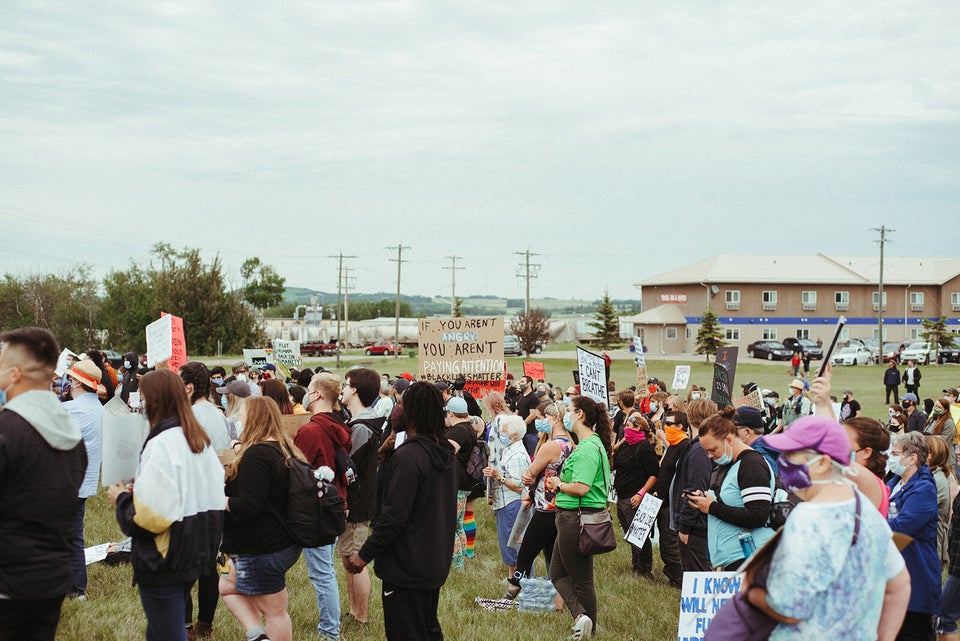
JESSICA KAITLYN PHOTOGRAPHY
Hundreds gathered for a Black Live Matters event in Innisfail, Alta. on June 13, 2020.
Rather than targeting more radical goals like defunding the police, for example, many of the organizers McNallie has worked with are simply focused on convincing people racism happens in their own communities in the first place.
“I think just awareness and having more people understand and be willing to learn is huge,” McNallie said. “We just want to have these conversations so that if it comes up again people know what to look for and what’s not OK, and maybe somebody can speak out and be an ally for somebody when they’re in that situation.”
It’s a strategy employed by other anti-racist organizers in the area too. Datus has worked with Sadia Khan to form a non-profit called UBUNTU - Mobilizing Central Alberta, a non-profit. The pair have travelled to many of the small-town, anti-racism rallies in recent weeks to speak to their own experiences as women of colour as a way to educate others.
Datus said it’s been inspiring to see the reception at these events.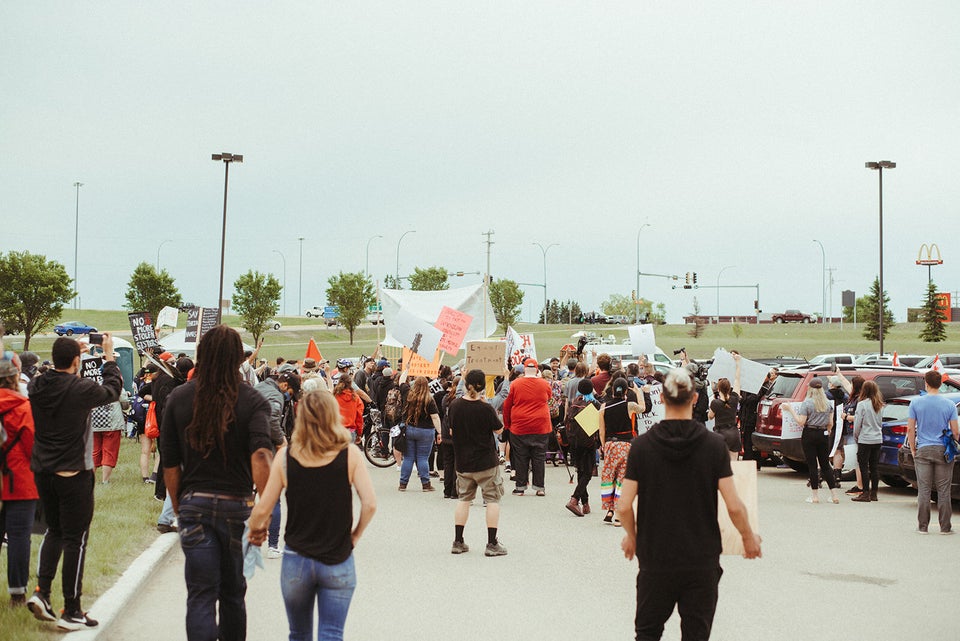
JESSICA KAITLYN PHOTOGRAPHY
Rather than targeting more radical goals like defunding the police, for example, many of the organizers McNallie has worked with are simply focused on convincing people racism happens in their own communities in the first place.
“I think just awareness and having more people understand and be willing to learn is huge,” McNallie said. “We just want to have these conversations so that if it comes up again people know what to look for and what’s not OK, and maybe somebody can speak out and be an ally for somebody when they’re in that situation.”
It’s a strategy employed by other anti-racist organizers in the area too. Datus has worked with Sadia Khan to form a non-profit called UBUNTU - Mobilizing Central Alberta, a non-profit. The pair have travelled to many of the small-town, anti-racism rallies in recent weeks to speak to their own experiences as women of colour as a way to educate others.
Datus said it’s been inspiring to see the reception at these events.

JESSICA KAITLYN PHOTOGRAPHY
Hundreds attended a Black Lives Matter event in Innisfail on June 13, 2020.
“When I’m speaking and I look out into the crowd and see people of various ages, various backgrounds, various communities who show up, day in and day out, and say, ‘Hey, we support you,’ ‘Hey, we’re listening to you,’ ‘Hey, how can we help’ — those people give me my voice,” she said.
Khan said it’s important that people in central Alberta know that there are Black, Indigenous and other people of colour in their communities who experience racism.
She said UBUNTU is working to organize longer term anti-racism efforts through training workshops and unconscious bias training in municipalities, church groups and businesses.
We just want to have these conversations so that if it comes up again people know what to look for and what’s not OK.Taylor McNallie
Many people are welcoming the chance to learn.
Innisfail Mayor Jim Romane initially drew fire for comments to the Calgary Herald where he said that he didn’t notice racism in his community and that he believed “all lives matter,” a controversial phrase often used by critics of Black Lives Matter movements. But the 74-year-old mayor quickly apologized, and acknowledged there’s a lot more for him to learn.
“We want to learn, we want to learn about this racism that’s supposed to be in our community,” he said in an early June interview with HuffPost Canada. “We want to start a dialogue with the community and get to the bottom of this because we want nothing to do with racism in our community.”
Romane dutifully attended the June 13 rally.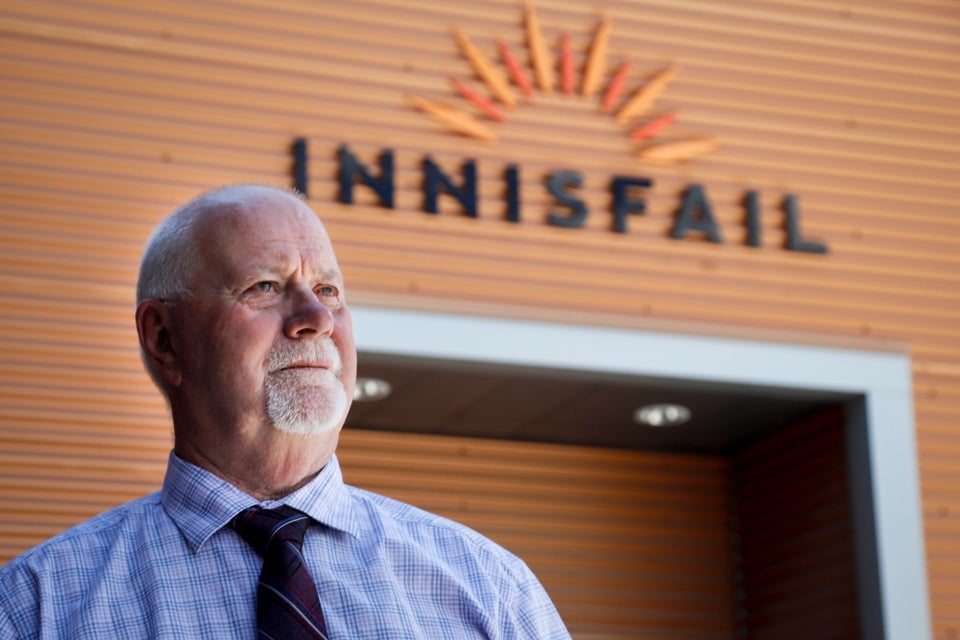
JEFF MCINTOSH/THE CANADIAN PRESS
“When I’m speaking and I look out into the crowd and see people of various ages, various backgrounds, various communities who show up, day in and day out, and say, ‘Hey, we support you,’ ‘Hey, we’re listening to you,’ ‘Hey, how can we help’ — those people give me my voice,” she said.
Khan said it’s important that people in central Alberta know that there are Black, Indigenous and other people of colour in their communities who experience racism.
She said UBUNTU is working to organize longer term anti-racism efforts through training workshops and unconscious bias training in municipalities, church groups and businesses.
We just want to have these conversations so that if it comes up again people know what to look for and what’s not OK.Taylor McNallie
Many people are welcoming the chance to learn.
Innisfail Mayor Jim Romane initially drew fire for comments to the Calgary Herald where he said that he didn’t notice racism in his community and that he believed “all lives matter,” a controversial phrase often used by critics of Black Lives Matter movements. But the 74-year-old mayor quickly apologized, and acknowledged there’s a lot more for him to learn.
“We want to learn, we want to learn about this racism that’s supposed to be in our community,” he said in an early June interview with HuffPost Canada. “We want to start a dialogue with the community and get to the bottom of this because we want nothing to do with racism in our community.”
Romane dutifully attended the June 13 rally.

JEFF MCINTOSH/THE CANADIAN PRESS
Innisfail mayor Jim Romane is seen in Innisfail, Alta. on June 9, 2020.
“I am going to keep this short and sweet because quite frankly I am here to listen,” he said at the Innisfail event, after acknowledging that he and the council will work to “do better.”
McNallie said that’s the goal of anti-racism efforts in places like central Alberta — giving space for people to learn and grow.
“We’re going to make the resources available to them,” she said. “And that it’s just really about — keeping that conversation going and holding space for people to ask questions.”
McNallie says having all of the different groups like Rural Alberta Against Racism and UBUNTU working together in central and rural Alberta has created a sense of community not just in these locations, but also between the organizers.
Events are planned in the coming weeks for Sylvan Lake, Blackfalds, Carstairs, Olds, Sundre and Caroline. McNallie said she’ll be there, helping support local organizers.
“We’re going to keep going back and creating conversation sessions and different educational sessions so that the conversation is constantly going and we’re building relationships with the community members,” McNallie said.
“It can be just a very casual sit down — I’ll bring donuts and coffee — we’re going to hang out, we’re just going to talk. We’ll bring in and take away with new information.”
“I am going to keep this short and sweet because quite frankly I am here to listen,” he said at the Innisfail event, after acknowledging that he and the council will work to “do better.”
McNallie said that’s the goal of anti-racism efforts in places like central Alberta — giving space for people to learn and grow.
“We’re going to make the resources available to them,” she said. “And that it’s just really about — keeping that conversation going and holding space for people to ask questions.”
McNallie says having all of the different groups like Rural Alberta Against Racism and UBUNTU working together in central and rural Alberta has created a sense of community not just in these locations, but also between the organizers.
Events are planned in the coming weeks for Sylvan Lake, Blackfalds, Carstairs, Olds, Sundre and Caroline. McNallie said she’ll be there, helping support local organizers.
“We’re going to keep going back and creating conversation sessions and different educational sessions so that the conversation is constantly going and we’re building relationships with the community members,” McNallie said.
“It can be just a very casual sit down — I’ll bring donuts and coffee — we’re going to hang out, we’re just going to talk. We’ll bring in and take away with new information.”
